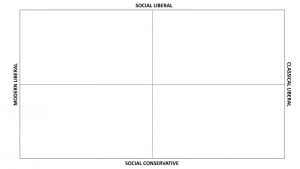Tag: establishment
Weekly Geopolitical Report – The Geopolitics of the 2020 Election: Part III (June 8, 2020)
by Bill O’Grady | PDF
In this five-part series on the geopolitics of the 2020 election, we have divided the reports into nine sections. Last week, in Part II, we discussed the second and third sections, understanding the electorate and party coalitions. In this report, we continue our coverage with the fourth and fifth sections, the incidence of the establishment coalition and the impact of social media.
Weekly Geopolitical Report – The Geopolitics of the 2020 Election: Part II (June 1, 2020)
by Bill O’Grady | PDF
In this five-part series on the geopolitics of the 2020 election, we have broken the reports into nine sections. In Part I, we covered the basics of public finance. This week, we will cover the second and third sections, understanding the electorate and party coalitions.
Understanding the Electorate
Understanding the electorate is about divining the psychological and economic interests of voters. In this section, we describe how we examine the voting public.
There is a distinction between class and identity. Identity is complicated. All of us belong to various groups based upon our gender, race, religion, age, geographic location, education, etc. The interlacing of these various memberships is known as intersectionality. Although the term is often applied to those who face discrimination, in general, this term captures the various “tribal” groups to which we find ourselves belonging. Thus, a white, gay, Catholic with a graduate degree may have something in common with a Hispanic, straight, Catholic with a high school diploma through their religious affiliation. However, it is unlikely the commonality would be very strong. In general, the greater the identity overlap a person has with others the higher the probability they will vote for or favor candidates of a similar persuasion. At the same time, each person tends to “rank order” their identities; some put a much higher rank on race relative to religion, for example. Or, their geographic location is the most important identity classification.
Class is rather straightforward, determined by the decile in which one’s income and wealth falls. This breakdown isn’t perfect, however, as the class interests between two people with equal income can differ. For example, if two middle managers at different firms make the same income, but one manager’s firm benefits from free trade and the other does not, they may favor different economic policies. But, in general, policies favored by class tend to be uniform. For example, the wealthy tend to have similar positions on taxes, while the less affluent tend to think very highly of Social Security.
We define a group as the cross-section of identity and class. A group is a set of like-minded people who tend to support similar political, economic and social positions.
To describe the interplay between identity and class, we have borrowed this grid from Peter Zeihan.
Weekly Geopolitical Report – Reflections on Politics and Populism: Part II (July 23, 2018)
by Bill O’Grady
Last week, we defined important terms that shape the political alignments and examined the coalitions that mostly define the political sphere.[1] This week, we make some general observations of how the coalitions interact, discuss the “natural” pairings of the coalitions and examine historical examples. We will conclude with market ramifications.
Observations
There is a division between class and identity. This is probably the greatest cause of confusion among political pundits and the general public alike. Sometimes voters will select a candidate who is detrimental to their economic interests. They usually do this because, at the time of their vote, identity was a stronger factor than class. Because it is more emotional and tribal, identity makes it hard to project outcomes. Class is fairly easy to observe; one can use wealth as a proxy. But identity, because it is multi-dimensional and somewhat fluid, can turn elections in unexpected ways. Our “laundry list” of surprises, the anti-establishment political outcomes noted in Part I of this report, were partly due to decisions based on identity.
Political leaders tend to use identity to woo voters outside the coalition of their class. This is done by either claiming affiliation to a group or by warning against the negative outcomes if another group takes office. Nearly every campaign story has some “origin myth,” where the candidate (usually RWE or LWE) harkens back to some period of their lives when they were living a hardscrabble existence so they can claim affinity to the populists to attract their vote. In some cases, the candidate is so removed from struggle that they have to cite the origin myths of their parents, grandparents or great-grandparents.
The other tactic often deployed is to suggest that if the other establishment candidate wins he/she will support policies that will undermine a populist group’s identity. For example, if a LWE candidate is trying to gain support from LWP voters, he will cite the threat to immigration or reproductive rights if the other candidate wins. A RWE may use similar tactics on the RWP, suggesting a LWE candidate will undermine gun ownership or religious liberties.
[1] A refresher on the coalitions—RWE: right-wing establishment; RWP: right-wing populist; LWE: left-wing establishment; and LWP: left-wing populist.



